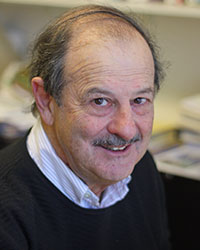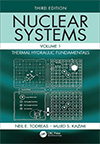Neil E. Todreas
KEPCO Professor of Nuclear Science and Engineering, and Professor of Mechanical Engineering (Emeritus)
todreas@mit.edu
617-253-5296
617-258-8863 (fax)
24-216A

KEPCO Professor of Nuclear Science and Engineering, and Professor of Mechanical Engineering (Emeritus)
todreas@mit.edu
617-253-5296
617-258-8863 (fax)
24-216A
B.S., Mechanical Engineering, Cornell University, 1957
M.S., Mechanical Engineering,Cornell University, 1958
Sc.D., Nuclear Engineering, Massachusetts Institute of Technology, 1966
Thermal hydraulic aspects of nuclear systems performance under steady-state and accident conditions, advanced light water reactor (LWR) and fast reactor concepts, and safety features of operating LWRs of western design.
Student participation in all projects requires nuclear engineering course preparation. Most topics below available at all levels — UROP, UG, S.M. and Ph.D. theses.
The goal of the efforts is to achieve long life core with a high degree of passive safety and greatly reduced capital cost. Means to achieve physical protection of these reactors is also of interest. The current design focus is on the offshore (8-12 miles), floating (housing the reactor in a cylindrical oil rig-like structure) nuclear plant called the OFNP.
Investigating the long-term technical and economic viability of existing nuclear plants is a national imperative for clean and secure electric power. This objective can be furthered by evaluation of the potential for aggressive power uprates for nuclear power plants as part of life extension programs for operation beyond 60 years. This research task will upgrade the integrated decision analysis methodology developed in a recently completed Ph.D. The analysis methodology is based upon analysis of the performance, safety, and economics associated with plant performance at the added capacity afforded by the adoption of advanced technologies.
The Cheng and Todreas correlation (CT) developed at MIT in the early 80s is the most widely used correlation for predicting pressure drop in wire-wrapped fuel rod bundles. New worldwide interest in sodium cooled fast reactors increases the necessity of a sound correlation for pressure drop calculation. There are several areas in which the CT correlation can be upgraded to make its prediction capability even better. This project will enhance the formulation of CT and verify its improved prediction capability by comparison to the available published data and computational fluid dynamic results.
This work investigates design options for these fast reactors to improve their economic competitiveness while retaining safety features sufficient to meet safe performance needs. The safety structure being applied is the new US regulatory technology neutral framework which presents new criteria for evaluating innovative design features.
The ice loading in these containments has led to a series of costly maintenance and design basis issues because of its sublimation and blockage of flow paths. The concept of replacing this ice with thin solid structure to absorb energy appears promising and merits further exploration.
Horizontal rod bundles in storage and transportation must be kept under certain maximum temperatures. Prediction methods and experimental data for such arrays exist. New input for the benchmark industry code used for these analyses have developed but need to be adjusted and validated based on comparison with existing experimental data.
